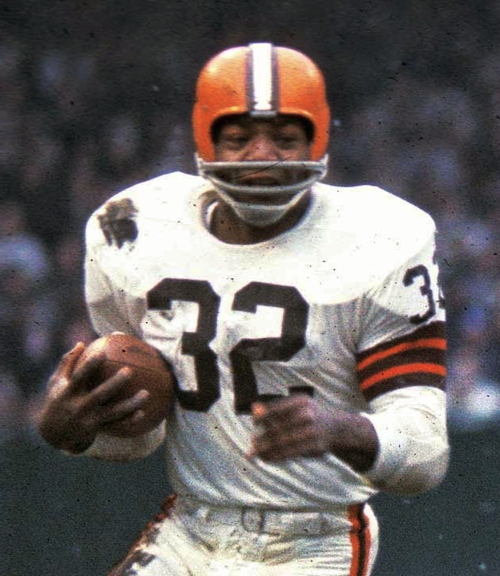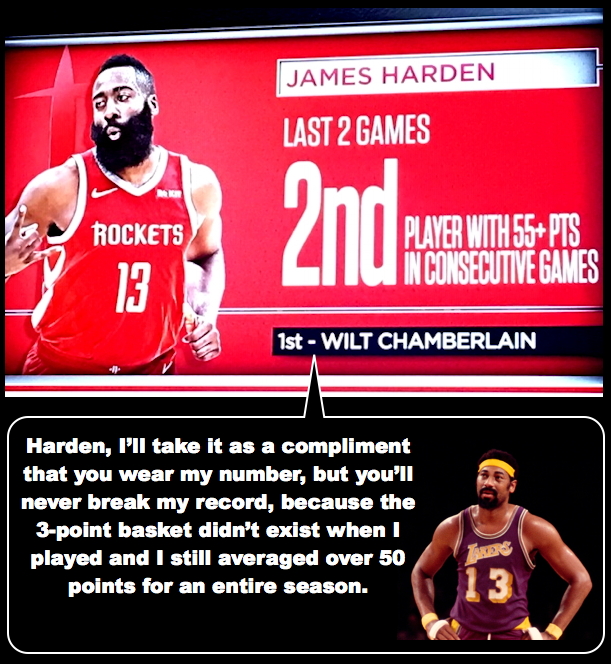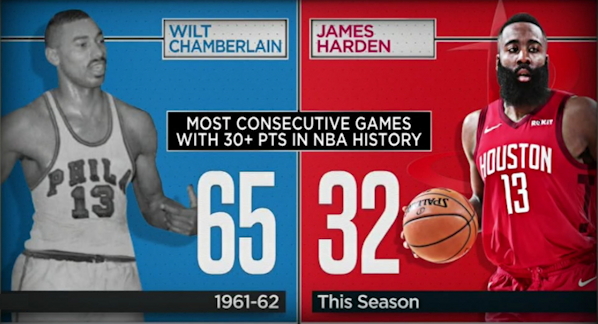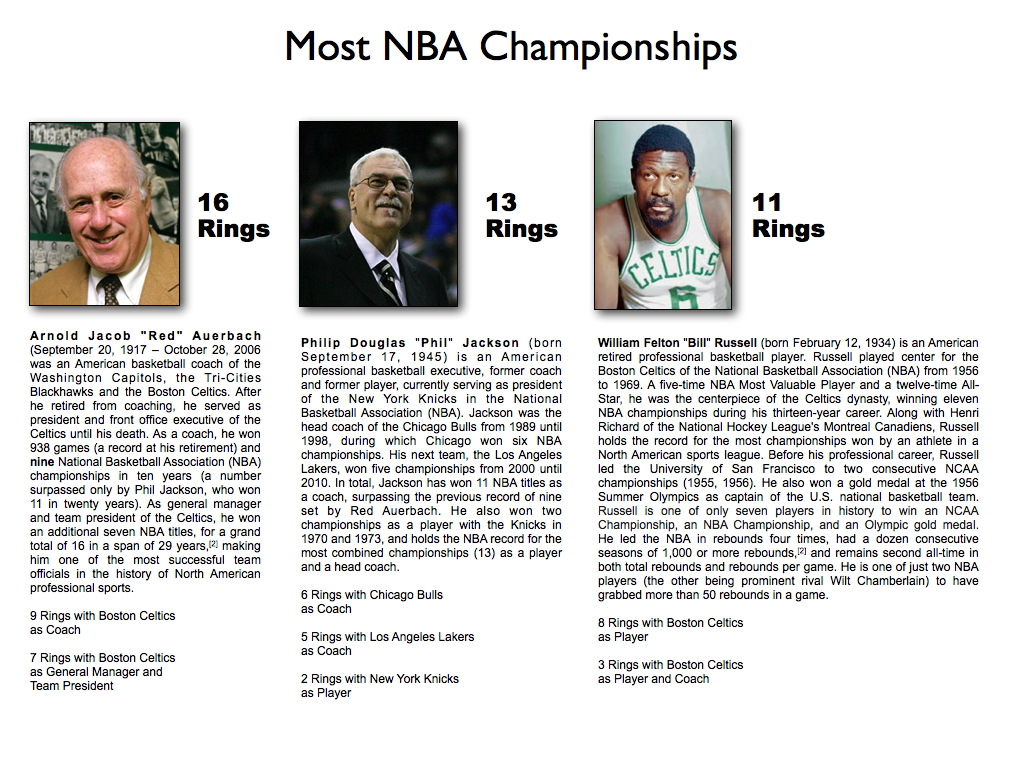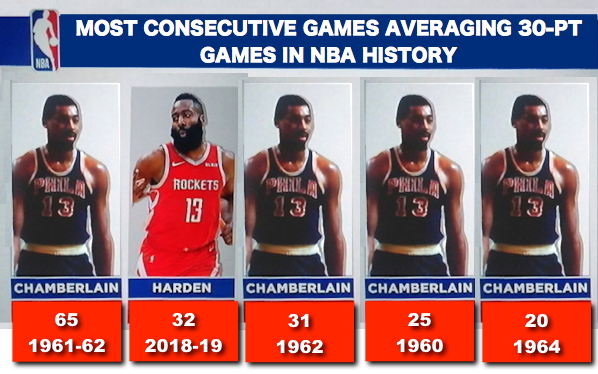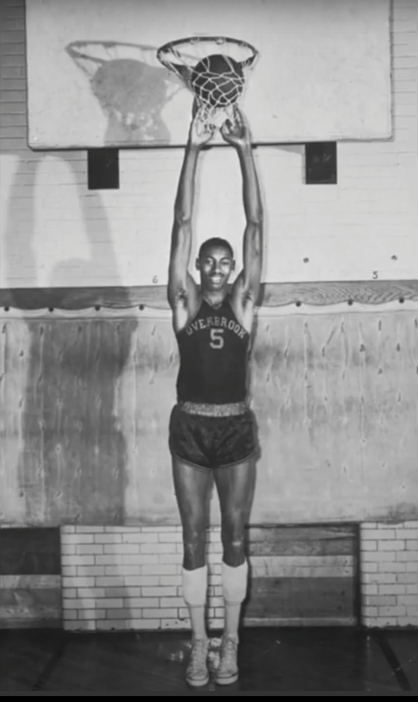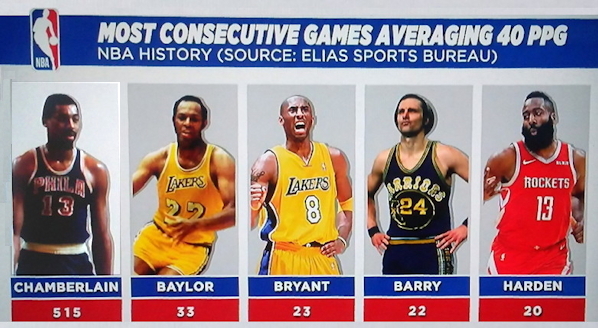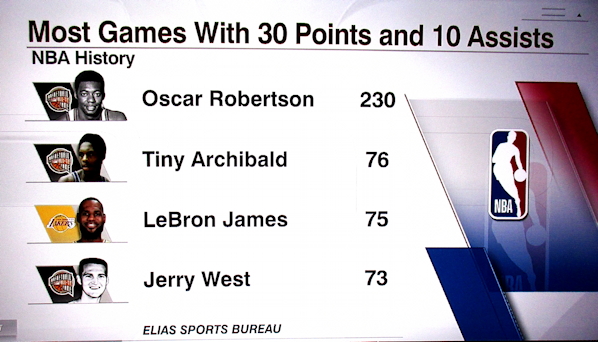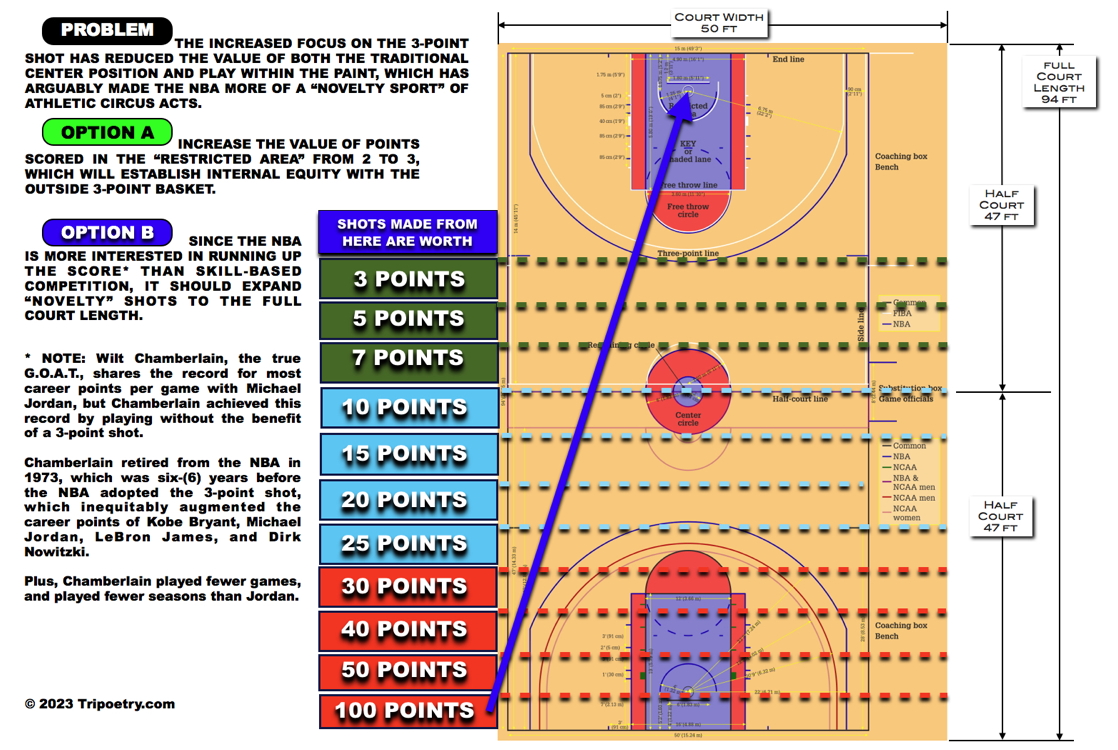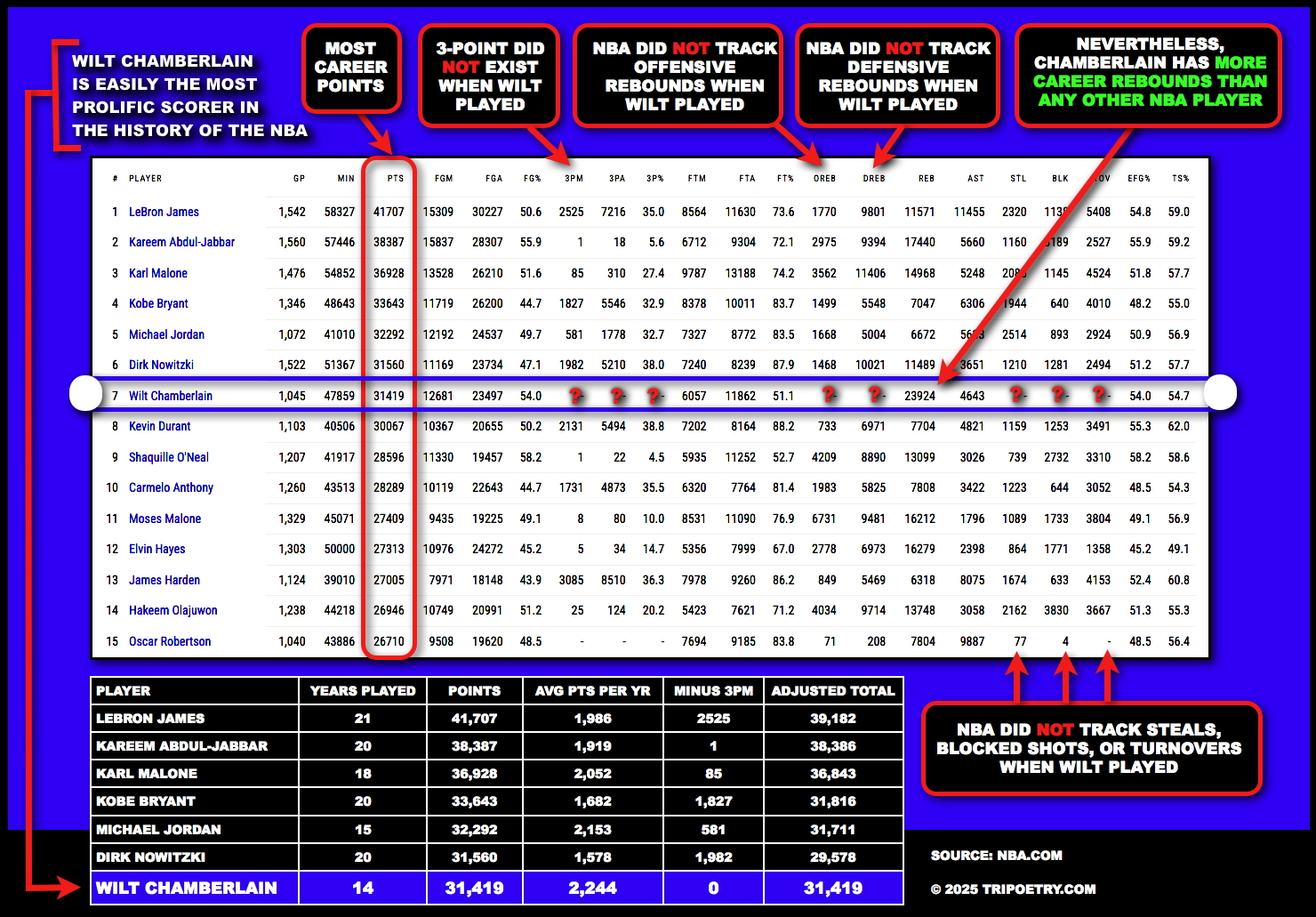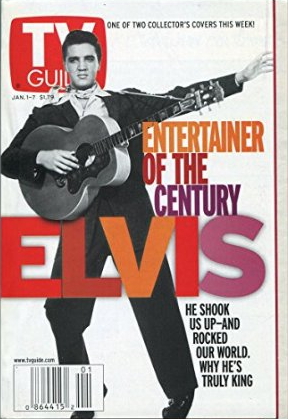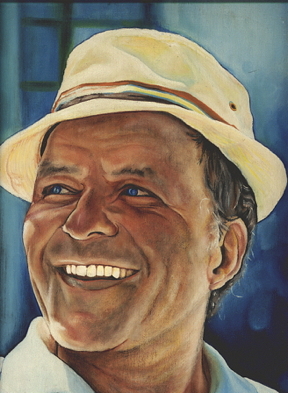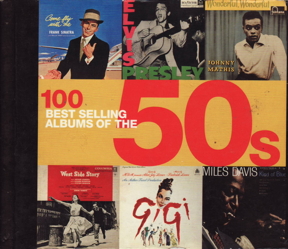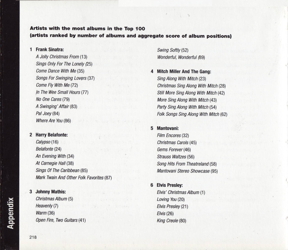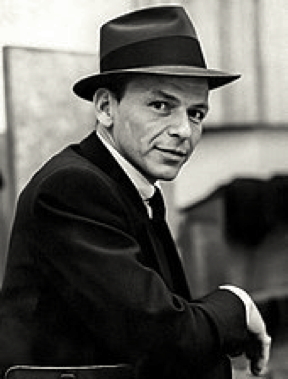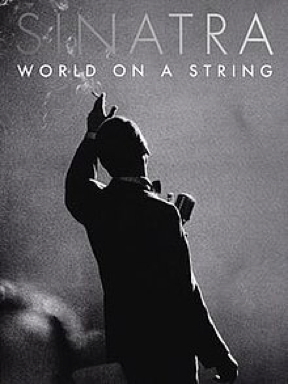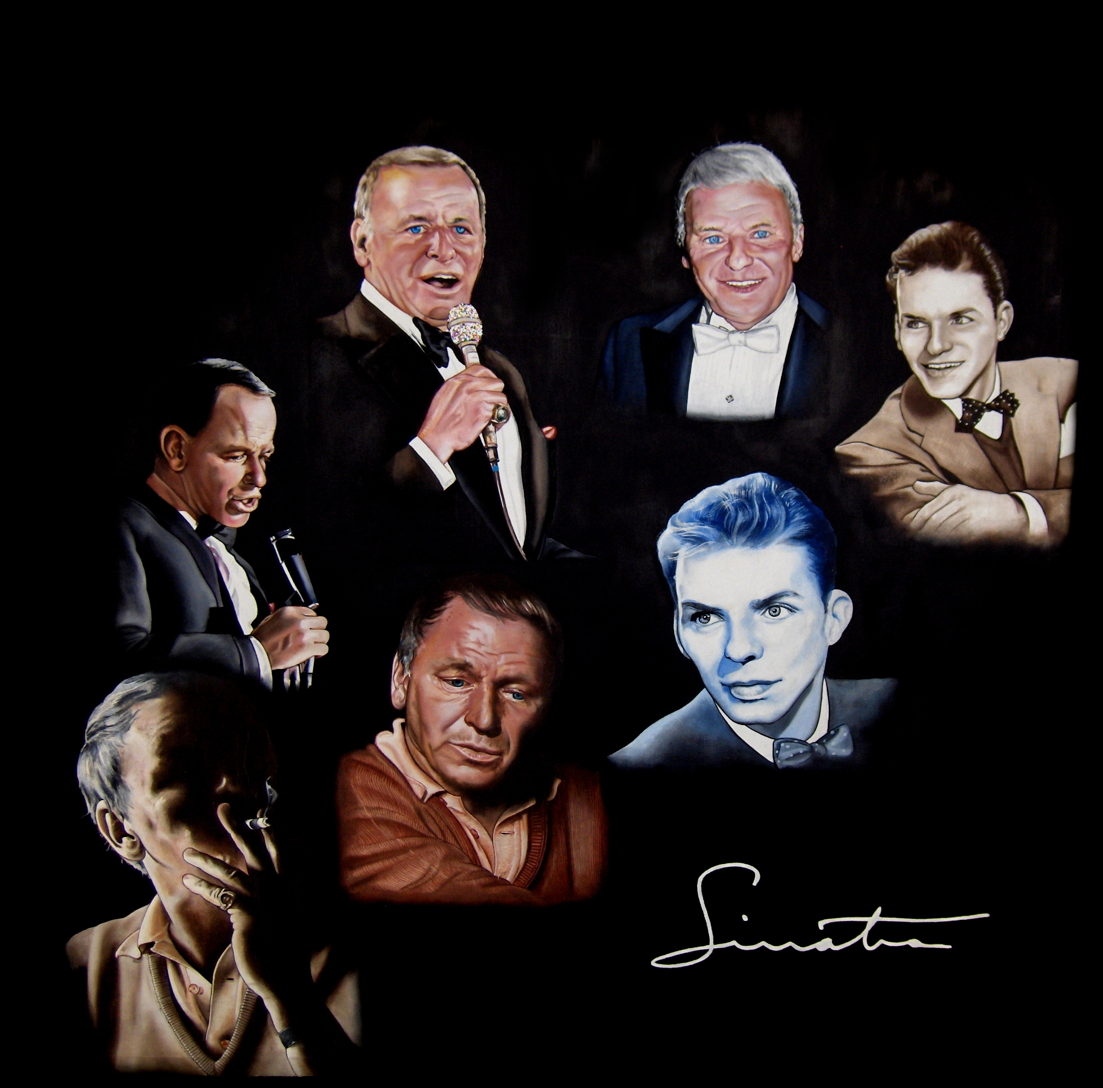
G.O.A.T. is a contemporary acronym for the "Greatest of all Time." This designation is frequently bestowed upon someone for displaying exemplary or extraodinary service, talent, ability, or skill. This designation is typically subjective and the word "arguably" is inserted before "G.O.A.T." because in the absence of conducting an empirical, fact-based assessment, such declarations can only function as blatantly subjective opinions.
It's my practice to convey oral or written statements only when paired with facts that validate the veracity of my conclusions; consequently, I have no need to insert "arguably" with my designation of someone as G.O.A.T. Most respectfully, if you disagree with my linear, fact-based analysis, then prove me wrong with facts, because your naked opinion only conveys an absence of intellectual acumen. With enlightenment, I welcome an opportunity to change my assessments.
The problem with determining a G.O.A.T. for any sport is the skewed, no, the ridiculous act of comparing apples to oranges, such as comparing players who do not play the same position, like comparing a running back to a wide-receiver. These positions perform differently, both offensively and defensively. Another problem is comparing players who did not compete under the same rules; the current NFL season consists of 16 games played during a 17-week period, but in 1935 only 12 games were played during the entire NFL season. So, how do we accurately and objectively determine which NFL running back is the G.O.A.T.? Simple, we compare apples to apples.
For decades former NFL running back Jim Brown has been referred to as the G.O.A.T., but when some running backs passed Brown's career rushing total some people no longer considered Brown the G.O.A.T. Again, we need to compare apples-to-apples, because Brown played for only nine-(9) years versus an average NFL career of 12.20 years for his peers. The apples-to-apples graphic below provides a year-by-year assessment of the career achievements of the top twenty-five-(25) NFL running backs.
YELLOW = Most yards rushed in that year. BLUE = Total yards rushed after 9 years that surpassed Jim Brown.
R
A
N
K
PLAYER
(Years Played)
RUSHING
YEAR 1
49 YR TOTAL CAREER RUSHING TOTAL YRS 10+ CAREER YRDS AVE # YRS RUSHING TITLE
Emmitt Smith (15 Years) 937 1,563 1,713 1,486 1,484 1,773 1,204 1,074 1,332 12,566 18,355 5,789 4.20 4 Walter Payton (13 Years)
679 1,390 1,852 1,395 1,610 1,460 1,222 596 1,421 11,625 16,726 5,101 4.40 1 Barry Sanders (10 Years) 1,470 1,304 1,548 1,352 1,115 1,883 1,500 1,553 2,053 13,778 15,269 1,491 5.00 4 Frank Gore
(14 Years)608 1,695 1,102 1,036 1,120 853 1,211 1,214 1,128 9,967 14,642 4,675 4.40 0 Curtis Martin (12 Years) 1,487 1,152 1,160 1,287 1,464 1,204 1,513 1,094 1,308 11,669 14,101 2,432 4.00 1 LaDainian Tomlinson
(11 Years)1,236 1,683 1,645 1,335 1,462 1,815 1,474 1,110 730 12,490 13,684 1,194 4.30 2 Jerome Bettis (13 Years) 1,429 1,025 637 1,431 1,665 1,185 1,091 1,341 1,072 10,876 13,662 2,786 3.90 0 Eric Dickerson (11 Years) 1,808 2,105 1,234 1,821 277 1,011 1,659 1,311 677 11,903 13,259 1,356 4.40 4 Adrian Peterson (11 Years) 1,341 1,760 1,383 1,298 970 2,097 1,266 75 1,485 11,675 13,132 1,457 4.70 3 Tony Dorsett (12 Years) 1,007 1,325 1,107 1,185 1,646 745 1,321 1,189 1,307 10,832 12,739 1,907 4.30 0 Jim Brown
(9 Years)942 1,527 1,329 1,257 1,408 996 1,863 1,446 1,544 12,312 12,312 0 5.20 8 Marshall Faulk (13 Years) 1,282 1,078 587 1,054 1,319 1,381 1,359 1,382 953 10,395 12,279 1,884 4.30 0 Edgerrin James (11 Years) 1,553 1,709 662 989 1,259 1,548 1,506 1,159 1,222 11,607 12,246 639 4.00 2 Marcus Allen (16 Years) 697 1,014 1,168 1,759 759 754 831 293 682 7,957 12,243 4,286 4.10 1 Franco Harris (13 Years) 1,055 698 1,006 1,246 1,128 1,162 1,082 1,186 789 9,352 12,120 2,768 4.10 0 Thurman Thomas
(13 Years)881 1,244 1,297 1,407 1,487 1,315 1,093 1,005 1,033 10,762 12,074 1,312 4.20 0 Fred Taylor
(13 Years)1,223 732 1,399 116 1,314 1,572 1,224 787 1,146 9,513 11,695 2,182 4.60 0 Steven Jackson (12 Years) 673 1,046 1,528 1,002 1,042 1,416 1,241 1,145 1,045 10,138 11,438 1,300 4.10 0 John Riggins (14 Years) 769 944 482 680 1,005 572 203 1,014 1,153 6,822 11,352 4,530 3.90 0 Corey Dillon
(10 Years)1,129 1,130 1,200 1,435 1,315 1,311 541 1,635 733 10,429 11,241 812 4.30 0 O. J. Simpson (11 Years) 697 488 742 1,251 2,003 1,125 1,817 1,503 557 10,183 11,236 1,053 4.00 4 Warrick Dunn (12 Years) 978 1,026 616 1,133 447 927 672 1,106 1,416 8,321 10,967 2,646 4.10 0 Ricky Watters (11 Years) 0 1,013 950 877 1,273 1,411 1,110 1,239 1,210 9,083 10,643 1,560 4.10 0 Jamal Lewis
(10 Years)1,364 0 1,327 2,066 1,006 906 1,132 1,304 1,002 10,107 10,607 500 4.20 1 Thomas Jones (12 Years) 373 380 511 627 948 1,335 1,210 1,119 1,312 7,815 10,591 2,776 4.00 0
CONCLUSION: PERFORMANCE-BASED ASSESSMENT
Jim Brown achieved significantly more while playing fewer years, and remains the greatest running back of all time.
G.O.A.T. NBA Basketball Player
Who's the greatest NBA basketball player of all time?
Bill Russell, with 11 NBA Championships, has more rings than any other player [that's right, more than LeBron (3 rings), Michael Jordan (6 rings), more than Kobe Bryant (5 rings); Russell is a 5x NBA Most Valuable Player; 12x NBA All-Star; 4x NBA rebounding champion;
Kareem Abdul Jabbar, a 6-time NBA Champion, used his "Sky Hook" as the greatest offensive weapon in NBA history, and scored more points (38,387) than any other NBA player; 19x NBA All-Star; 10x All-NBA First Team; 2x NBA scoring champion;
Michael Jordan, a 6-time NBA Champion, 14x NBA All-Star; 9x NBA All-Defensive First Team; 10x NBA scoring champion; 9x NBA All-Defensive First Team; 10x All-NBA First Team.
Kobe Bryant, a 5-time NBA Champion, 2-time NBA Finals MVP; 18x NBA All-star; 2x NBA scoring champion; 9x NBA All-Defensive First Team; 11x All-NBA First Team;
LeBron James, a 3-time NBA Champion, 14x NBA All-Star; 1x NBA scoring champion; 5x NBA All-Defensive First Team; 12x All-NBA First Team;
Wilt Chamberlain, a 2-time NBA Champion, set and continues to retain more NBA records than any other player. Chamberlain is the only player in NBA history to average 40 and 50 points per games for an entire season, score 100 points in a single game, and grab over 2,000 rebounds in a single season. Chamberlain holds 72 NBA records, 68 by himself. Chamberlain averaged a record 22.9 rebounds for a career, 50.4 points per game in a season, 55 rebounds in a single game, scored 65 or more points 15 times, and 50 or more points 118 times. Chamberlain also won seven scoring, nine field goal percentage, and 11 rebounding titles in addition to an assist title; seven years into his NBA career Wilt intentionally stopped scoring aggressively because he was embarrassed by scoring too much, and his new coach (Bill Sharman) wanted him to transition to more of a defensive game like Bill Russell; 13x NBA All-Star; 7x All-NBA First Team; 7x NBA scoring champion;
Top-15 single-game point records in NBA history:
Player (Team) REB FG-FGA FTM-FTA
In NBA history, only ten-(10) players have achieved this feat on 14 occasions, and only Wilt Chamberlain had six such games!
Chamberlain achieved this record by playing without the benefit of a 3-point shot, by playing fewer games, and by playing fewer seasons than Jordan, Kareem, and LeBron.
Plus, Chamberlain continues to singularly hold the record for the most consecutive games with 50 or more points, the most games with 40 or more points in a season, the most consecutive games with 40 or more points, the most consecutive games with 30 or more points, the most consecutive games with 20 or more points, most career rebounds (23,924), and the most points in one half (59).
Wilt Chamberlain (Philadelphia Warriors) 100
March 2, 1962
Warriors 169 vs Knicks 147
25 36-63
(57.1%)28-32
(87.5%)Kobe Bryant
(Los Angeles Lakers)January 22, 2006
Lakers 122 vs Raptors 104
6 28-46 18-20 Wilt Chamberlain (Philadelphia Warriors) December 8, 1961
Lakers 151 vs. Warriors 147 (3 OT)
43 31-62 16-31 Wilt Chamberlain (Philadelphia Warriors) January 13, 1962
Warriors 135 vs. Packers 117
36 29-48 15-25 Wilt Chamberlain
(San Francisco Warriors)November 16, 1962
Warriors 127, Knicks 111
14 29-43 15-19 David Tompson (Denver Nuggets) April 9, 1978
Pistons 139 vs. Nuggets 137
7 28-38 17-20 Luka Doncic
(Mavs)73 January 26, 2024
Mavs 14 vs. Hawks 143
10 25-33 15-16 Wilt Chamberlain
(San Francisco Warriors)November 3, 1962
Lakers 127 vs. Warriors 115
18 29-48 14-18 Elgin Baylor
(Los Angeles Lakers)November 15, 1960
Lakers 123 vs. Knicks 108
25 28-48 15-19 David Robinson
(San Antonio Spurs)April 24, 1994
Spurs 112 vs. Clippers 97
14 26-41 18-25 Donovan Mitchell
(Cavs)71 January 2, 2023
Cavs 145, Bulls 134 (OT)
8 22-34 20-25 Damian Lillard
(Blazers)71 February 26, 2023
Blazers 131 vs. Rockets 114
6 22-38 14-14 Wilt Chamberlain
(San Francisco Warriors)March 10, 1963
Nationals 163 vs. Warriors 148
18 27-38 16-22 David Booker
(Suns)70 March 24, 2017
Celtics 130 vs.
Suns 1208 21-40 24-26 Joel Embiid
(76ers)70 January 22, 2024
Sixers 133 vs.
Spurs 12318 24-41 21-23
For professional basketball players in the NBA the rules have changed so frequently that apple-to-apple comparisons are extremely difficult. For example, the league did not always track blocked shots, the league did not adopt the three-point shot until the start of the 1979–80 season, and the number of regular season games has significantly increased since the league was first formed on June 6, 1946. Nevertheless, the NBA continues to compile records as if all games were played under the same rules; coaching was entirely different back then and now; and players are measured, in error, against a constantly moving finish line. That's not only unfair to legendary players, but such skewed recordkeeping falsely inflats the value of current players.For decades former NBA player Wilt Chamberlain has been referred to as the G.O.A.T., but when a few players passed Chamberlain's career point total some people no longer considered Chamberlain the G.O.A.T. Instead of being objective and looking at the "big picture," some people began giving too much credit to up-and-coming "johnny-come-lately" athletes who clearly had or have talent, but lacked the robust skills and demonstrated record-setting performance of Wilt Chamberlain. The apples-to-apples graphic below provides a year-by-year assessment of the career achievements of the top ten-(10) NBA scorers of all-time.
Note: Chamberlain and Jordan share the record for most career points per game, but Chamberlain achieved this record by playing without the benefit of a 3-point shot, by playing fewer games, and by playing fewer seasons than Jordan.
NOTE: Yes, since this exhibit was prepared (see update below) LeBron James passed Kareem Abdul-Jabbar for most career points. However, Wilt Chamberlain STILL holds the record for the highest average of points scored per year at 2,244 versus LeBron James at only 1,986.
RANK
Although Chamberlain played for only fourteen-(14) years versus an average NBA career of 18.20 years for his Top 10 scoring peers, he still holds the record(s) for:
1. Most points, season - 4,029 in 1961-62 and 3,586 in 1962-63
2. Highest average, points per game, season - 50.36 in 1961-62, and 44.83 in 1962-63, and 38.39 in 1960-61
3. Most points, rookie, season - 2,707 in 1959-60
4. Highest average, points per game, rookie, season - 37.60 in 1959-60
5. Most points, rookie, game - 58 on 01-25-60, and 58 on 02-21-60
6. Most consecutive seasons leading league, points - 7 times (later tied by and then surpassed by Michael Jordan)
7. Highest scoring average in an NBA Season - The highest scoring average in an NBA season is 50.4 points per game by Wilt Chamberlain (USA) for the Philadelphia Warriors in the 1961-62 season. In his career, he scored an average of 30.1 points per game, taking into account his total of 31,419 for Philadelphia Warriors 1959-62, San Francisco Warriors 1962-65, Philadelphia 76ers 1964-8 and Los Angeles Lakers 1968-73. He scored 50 or more points in 118 games, including 45 games in 1961-62 and 30 in 1962-63.
"When a man like Wilt, who was a freak of nature, records 52 pts, 32 rebs, 24 blks, 11 stls and 14 asts in a single game, then how can you tell me he isn't arguably the greatest ever? The man could do anything he wanted to do on the court and still to this day way ahead of his time. I never judge a player by how many rings since its a team accomplishment, I go by skill set and what facets he brings to the table as he was the complete package."
Tyler Hingleton
If an athlete with the Most NBA Championships is the G.O.A.T., then 6-time NBA Champion Michael Jordan cannot be the G.O.A.T., because there are nine-(9) NBA athletes with more rings than Michael Jordan!!!
Bill Russell Sam Jones Tom Heinsohn
K. C. Jones
Tom "Satch" Sanders
John HavlicekJim Loscutoff Frank Ramsey Robert Horry
Plus, we must not overlook . . .
Therefore, the measure of "greatness" cannot be confined to only the number of NBA Championships. How and what did an athlete do to clearly define his prowess above and beyond all others? Again, as represented by the graphs below, here's how Wilt Chamberlain set the standard way, way, way beyond the reach of Michael Jordan (not listed), Kareem Abdul-Jabbar (not listed), and LeBron James (not listed).
Chamberlain had more consecutive games (515) averaging 40 points-per-game than the combined total (98) of the next four-(4) highest NBA players. It's not even close. Putting all "emotion" aside, Wilt Chamberlain achieved significantly more while playing fewer years, and remains the greatest basketball player of all time. It's not even close.FROM YOUTUBE.COM - There's one thing Celtic fans like Bruno here, choose to ignore: The single game rebound record. Chamberlain’s team losses to Celtic teams were an aggregate of less than 25 points, including a last second miracle shot by Sam Jones in 1962 to beat the Sixers by one point. Forty years after he retired at the age of 37, Chamberlain’s name appears in the NBA’s record book 97 times; when he retired following the 1972-73 season, it was 128 times. Wilt and Bill Russell played against each other 142 times throughout their careers. In those head-to-head match-ups, Wilt averaged 28.7 points and 28.7 rebounds while Russell posted averages of 14.5 and 23.7. Russell was distraught in the game when Wilt grabbed 55 - FIFTY-Five - rebounds against him; Wilt dominated the paint, taking everything in sight. That 55 rebound record still stands today and no one will come near it. Wilt scored 135 points in a 24 hour span - 73 against the Bulls and 62 points against the Celtics. It took 22 years for someone to score 50 or more points on consecutive nights. Bernard King did it - back to back 50’s - versus San Antonio and Dallas in 1984. Wilt scored 50 or more points 118 times in his career; Michael Jordan is second with 31. Twenty different players have scored 60 or more points in an NBA game. Only four players have scored 60 points on more than one occasion: Wilt 32 times, Jordan five times, Kobe five times, and Elgin Baylor four times. Everyone makes a big fuss out of a triple double. How about a triple double-double, which Wilt did against the Pistons in 1968! Wilt’s line from that game – 22 points, 25 rebounds and 21 assists. Never fouled out of a game; high school, college, professional! - ah55761
Michael Jordan tied Chamberlain's record for highest points per game, career average at 30.10 points; but deleting Jordan's 3-point shots drops Jordan's career point average to 29.58. To be fair to all players (past and current), the NBA should establish two-(2) separate recordkeeping systems:
(A) one database for all games played BEFORE the 1979–80 season and the adoption of the 3-point shot; and
(B) one datebase for all games played AFTER the 1979–80 season and the adoption of the 3-point shot.There's amble justification for the NBA to create two-(2) separate recordkeeping systems.
1. In track and field, on 1 April 1986, the men's javelin (800 grams (1.76 lb)) was redesigned by the governing body (the IAAF Technical Committee). They decided to change the rules for javelin design because of the increasingly frequent flat landings and the resulting discussions and protests when these attempts were declared valid or invalid by competition judges. The world record had also crept up to a potentially dangerous level, 104.80 m (343.8 ft) by Uwe Hohn. With throws exceeding 100 meters, it was becoming difficult to safely stage the competition within the confines of a stadium infield. The javelin was redesigned so that the centre of gravity was moved 4 cm (1.6 in) forward. In addition, the surface area in front of centre of gravity was reduced, while the surface area behind the centre of gravity was increased. This had an effect similar to that produced by the feathers on an arrow. The javelin turns into the relative wind. This relative wind appears to originate from the ground as the javelin descends, thus the javelin turns to face the ground. As the javelin turns into the wind less lift is generated, reducing the flight distance by around 10% but also causing the javelin to stick in the ground more consistently. In 1999, the women's javelin (600 grams (1.32 lb)) was similarly redesigned. The resulting designs, which made flat landings much less common and reduced the distances thrown, became official for men starting in April 1986 and for women in April 1999, and the world records (then 104.80 m by Uwe Hohn, and 80.00 m by Petra Felke) were reset. The current (as of 2017) men's world record is held by Jan éelezný at 98.48 m (1996); Barbora Špotáková holds the women's world record at 72.28 m (2008).
2. In addition to Wilt Chamberlain, the career achievements of many legendary NBA athletes, such as Oscar Robertson, are also being skewed, distorted, or supressed by the leagues one-size-fits-all recordkeeping system that includes "soft" changes in NBA rules such as no hand touching, 3-point basket, more regular games per season, etc. In the graph at right, keep in mind, Robertson and Jerry West retired from the NBA in 1974, which was five-(5) years before the NBA adopted the 3-point shot, which inequitably augmented the career points of LeBron James and Michael Jordan. Archibald retired in 1984 and rarely shot the newly adopted 3-point basket.
Some people think Michael Jordan was the most astonishing leaper in NBA history, but he was NOT. Basketball rules were specifically changed because of Chamberlain's jumping ability! Chamberlain, was an accomplished 6'6" high jumper in high school, and while attending the University of Kansas he won the high jump at the Big Eight track and field championships three straight years, where 6'10.5" was his highest jump!How high could Wilt really jump?
Chamberlain used his leaping ability to literally jump from the free throw line to dunk the basketball, but the shooter is not allowed to cross the foul line (where they take the shot) until the ball hits the rim. So, the NBA made a rule change, because of Wilt Chamberlain; and specifically aimed at Wilt Chamberlain, because he was so big and so fast that if he missed a free throw Chamberlain could leap from the foul line to rebound his own shot and dunk it. Here again, there is absolutely no record of comparable or better performance by LeBron James, Kobe Bryant, or Michael Jordan, and therefore, no justification to usurp Wilt Chamberlain as the true G.O.A.T.
How great was Wilt?
Even after completing his NBA career Chamberlain remained a dominant force.
Here, watch this:
Again, putting all "emotion" aside, Wilt Chamberlain achieved significantly more
while playing fewer years, and remains the greatest basketball player of all time.
It's not even close.
CONCLUSION: PERFORMANCE-BASED ASSESSMENTIf "someone" is "anointed" as greatest of all time, well then, surely that athlete can beat any other athlete heads-up in a one-on-one competition. Therefore, consider the following assessment, if the contenders for the title of "G.O.A.T." were all in their athletic physical prime, and competing against each other in a one-on-one basketball game to twenty-one-(21) points, who would ultimely win?
ATHLETE VERSUS ATHLETE RESULT OR LIKELY OUTCOME COMMENT Kareem Abdul Jabbar versus Dr. J Kareem won
decisivelyDr. J was too small; and Jabbar
was a better shooter and scorerKareem Abdul Jabbar versus Michael
JordanKareem would
win decisivelyJordan is too small; and Jabbar
is a better shooter and scorerKareem Abdul Jabbar versus LeBron
JamesKareem would
win decisivelyJames is too small; and Jabbar
is a better shooter and scorerKareem Abdul Jabbar versus Wilt Chamberlain Chamberlain would win decisively Chamberlain was way too strong;
was far more athletic and faster; could
jump higher and with considerable finesse;
and he was an aggressive scorer
Chamberlain and Jordan share the record for most career points per game, but Chamberlain achieved this record by playing without the benefit of a 3-point shot, by playing fewer games, and by playing fewer seasons than Jordan. The only reason Wilt and Bill Russell are not identified as the "G.O.A.T." is because they don't have an active public relations manager and a corporate sponsor (Nike, Adidas, etc.) to constantly run commercials promoting their products and services. For example, Michael Jordan is constantly in the "public eye" by selling shoes, clothes, gambling, playing golf, buying athletic teams, etc., but:
Bill Russell's estate doesn't do a damn thing to "promote" his achievements, and Russell continues to possess more championship rings than any former or current NBA athlete; and
Wilt Chamberlain's estate doesn't do a damn thing to "promote" his achievements, and Chamberlain continues to possess more individual NBA records than any former or current NBA athlete!
FACT: DISNEY, ESPN, TNT, NBA, Nike, etc., cannot generate new and sustain existing revenue streams by "promoting" deceased and non-competing NBA athletes as "The G.O.A.T."
Although Elvis Presley, Marilyn Monroe, Frank Sinatra, Michael Jackson, Judy Garland, and John Wayne, etc., are DEAD, nevertheless, their estates retain marketing and media relations companies to actively, strategically market and promote their "brand" in commercials, movies, and via hundreds of products and services. Meanwhile, the NBA constantly changes its rules and recordkeeping (i.e., "it moves the goal posts") to establish new measures and records which immediately negate or reduce the value of athletic performances of past generations; so records mean absolutely nothing. The "commercial truth," of the professional sports "eco-system" of broadcast media, print media, film, radio, social media, etc., is their inability to generate and sustain vibrant revenue streams from retired or dead athletes!
Then following statement is bereft of opinion and solidly anchored on the aforementioned facts.
Wilt Chamberlain is "The G.O.A.T."
'Nuff said!
TV Guide Magazine claimed Elvis Presley as the "Entertainer of the 20th Century" on its cover issue dated January 1 - 7, 2000. I disagreed, and I wrote TV Guide a letter that objectively detailed the errors of their blatantly subjective conclusion.
In summary, by definition a "great entertainer" should be "great" and "multi-talented" in various artistic disciplines, such as singing, dancing, acting, impressions, film, stage, concerts, television, radio, painting, producing, directing, writing, etc., and such an entertainer should have received national and international awards and recognition as a great entertainer. In this regard, Sammy Davis, Jr. was universally acclaimed as "The Greatest Entertainer in the World," but Davis was noticably absent from TV Guide's rosters of greatest entertainers. Plus, the first major multimedia entertainer of the previous century who truly "did it all," in music, concert, film, television, and the entertainment business was clearly Bing Crosby, but he was also noticably absent from TV Guide's roster.
Most importantly, TV Guide also failed to establish objective measures that specifically captured the character and scope of "entertainment greatness," such as: [1] individual artistry; [2] musical success (vocal ability, musicianship, sales, awards, etc.); [3] film (acting, directing, producing, boxoffice, awards, etc.); [4] dance; [5] his/her own personal evolution; [6] impact of the artist on the business of entertainment; [7] impact of the artist on society; and (8) legacy. So, other than selling a bunch of records and acting in nearly two dozen films with essentially the same script, what did Elvis actually accomplish?
We can easily dismiss Elvis' film career, because it was not even in the league of three time Academy Award nominated and one-time Best Actor Bing Crosby. Conversely, Frank Sinatra received three-(3) performance-based Academy Awards (Honorary, Best Supporting, and Humanitarian) and another three-(3) Academy Awards for Best Original Song (in 1954 for "Three Coins in the Fountain," and in 1957 for "All the Way," and in 1959 for "High Hopes"). And Elvis' film career quickly disappeared into mediocrity.
According to German owned BMG which owns Elvis' label RCA, it's estimated that Elvis has sold over one billion records worldwide, more than anyone else in the history of the record business. But when it's all said and done, what single recording artist has been the most prolific, produced more recordings and has more product available than anyone else. Elvis? No. Sinatra? Yes. What recording artist has consistently charted new material in the top 100 from the 1940s through the 2000s? Elvis? No. Francis Albert Sinatra? Yes.
Frank Sinatra's discography is extremely robust, having recorded 59 studio albums and 297 singles in his solo career, spanning 54 years. Sinatra after having had stints with the quartet The Hoboken Four and with the orchestras of Harry James and Tommy Dorsey, launched a solo career in 1943, signing with Columbia Records; his debut album The Voice of Frank Sinatra was issued in 1946. Sinatra would achieve greater success with Capitol and Reprise Records, the former of which he released his final two albums on—Duets and Duets II. Eight compilation albums under Sinatra's name were released in his lifetime, with more albums released following his death in 1998.
Elvis Presely truly had phenomenal chart success, but the tail does not wag the dog. Guess who has more albums in the 100 best-selling albums in the 1950s than any other artist? Elvis? No. Frank Sinatra. Yes! Source: Recording Industry Association of America (RIAA) and 100 Best Selling Albums of the 50s by Charlotte Greig (see graphic at right).
CHART SUCCESS - Frank Sinatra holds the unique distinction of singing on the first Billboard No. 1 single, "I'll Never Smile Again" (1940) — which sold 900,000 copies — and had the first ever No. 1 album in the UK, Songs For Swingin' Lovers (July 28, 1956). This same album is also the only album to chart among the UK top twenty singles, peaking at No. 12 on June 15, 1956. In 1959, the album Come Dance with Me! also entered the UK singles chart peaking at No. 30 the same week it would start a 30-week run on the album chart, going as high as No. 2.
From his first released single in 1940 — as the singer with Tommy Dorsey's band — to the 1980 release of "Theme from New York, New York", Frank Sinatra had 209 hits on Billboard's pop singles charts. Of those, 127 made the Top Twenty, 70 made the Top Ten and 10 reached the No. 1 position — "I'll Never Smile Again" (1940), "There Are Such Things" (1942), "In the Blue of the Evening" (1943), "All or Nothing at All" (1944), "Oh What It Seemed To Be" (1945), "Five Minutes More" (1946), "Mam'selle" (1947), "Learning the Blues" (1955), "Strangers in the Night" (1966) and "Somethin' Stupid" (1967).
Of Sinatra's 56 Top Twenty albums on Billboard's pop album charts, 42—including soundtracks — reached the Top Ten and 6 made the No. 1 position — The Voice of Frank Sinatra (1946), Come Fly With Me (1958), Frank Sinatra Sings for Only the Lonely (1958), Come Dance with Me! (1959), Nice 'n' Easy (1960) and Strangers in the Night (1966). He also has the longest time span of charting Top Ten albums on the Billboard album chart, 62 years with The Voice of Frank Sinatra going to No. 1 in 1946, and Nothing But the Best going to No. 2 in 2008.
Sinatra's 1958 album Frank Sinatra Sings for Only the Lonely spent 120 weeks on Billboard's album chart, peaking at No. 1. His next album, Come Dance with Me! (1959) spent 140 weeks on Billboard, peaking at No. 2.
"My Way" (1969) is the longest charting U.K. single of all time, with 122 weeks spent on the chart, peaking at number 5. The single re-entered the chart 8 times between 1970 and 1972. A 1995 re-release spent 2 weeks on the chart.
In the UK, 42 Sinatra albums have made the Top Ten. Fifty-four Sinatra albums have made the Top Twenty, the longest charting of those albums being the 1997 compilation My Way: The Very Best of Frank Sinatra, which, to date, has charted for 128 weeks achieving 5 x platinum status. Six of Sinatra's albums reached the No. 1 position on the UK album chart, with a further five peaking at No. 2.
On January 26, 1980 at Maracanã Stadium in Rio de Janeiro, over 175,000 people attended the fourth-(4th) highest-attended single-artist's ticketed concert in history, which featured Frank Sinatra. Elvis has never been so ranked.
Frank Sinatra was the first two-time winner and three-time winne of the Grammy for Album of the Year. He won in 1960, 1966 and 1967. He is the most nominated artist in this category with 8 nominations.
The Big Picture? When the Beatles, Rolling Stones, and other musical acts launched the British invasion in the early 1964s, who won the Grammy for Album of the Year? The Beatles? Elvis? No. Forty-five-(45) year-old Frank Sinatra won for "Come Dance with Me! (1960)," then fifty-(50) year-old Frank Sinatra won for "September of My Years (1966)," and then fifty-one-(51) year-old Frank Sinatra won for "A Man and His Music (1967)." Elvis never received a Grammy for any of this classic rock & roll songs of the 1950s or 1960s, but he did receive three-(3) Grammy awards for his gospel recordings. Where was Elvis?
During his lifetime, Frank Sinatra raised in excess of one billion dollars for various charities worldwide! For example, in 1962, at his own expense, Sinatra traveled from Los Angeles to Japan, Hong Kong, Israel, Greece, Italy, France, Monte Carlo, and England performing concerts to benefit children's charities. Sinatra absorbed the entire cost of the tour so that all monies raised would go directly to the designated charities. Why? Sinatra replied he, "was an over privileged adult, who ought to help underprivileged children." Source: Sinatra: World On A String." Frank Sinatra's philanthropic work is legendary and continues after his death through the Frank Sinatra Foundation. And what did Elvis do in 1962?
Way before it became fashionable to advocate for civil rights, even before he became pals with Sammy Davis, Jr., Frank Sinatra made a serious musical statement for ethnic equality. Let's not forget all throughout the 1940s, 1950s and early 1960s Black performers (Nat King Cole, Ella Fitzgerald, Duke Ellington, etc.) could not sleep in the same Las Vegas hotels where they performed, but Frank Sinatra refused to perform unless members of his band and performers like Sammy Davis, Jr. could sleep and perform in the same hotel. Frank Sinatra was a catalyst for change. The very first "music video" to receive an Academy Award® was presented to Frank Sinatra in 1945 for the following video, "The House I Live In."
CONCLUSION: PERFORMANCE-BASED ASSESSMENT
Elvis Presley cannot be the "Best Entertainer of the 20th Century," because:
(1) Elvis did not produce a sufficient amout of work and receive award recognition for such;
(2) the scope of work he performed was not multifaceted being limited to singing, some dancing, and some acting; and
(3) his career was short-lived.
Conversely, Frank Sinatra sang the best songs; sang with the best artists; performed at the best concert stages around the entire world; acted in and produced and owned films, television shows, and concerts; danced with Gene Kelly; was a humble philanthropist, and he did this and so very much more for sixty-(60) years (1935 to 1995)! So, here's the bottom line, the only performer to have successfully and repeatedly achieved continuous worldwide success as a "great" performer throughout the last century is Frank Sinatra.
'Nuff said!
I welcome your feedback.
Trip Reynolds
trip.reynolds@yahoo.com
Reynolds' Rap
December 12, 2018
© 2017-2025 Tripoetry. All Rights Reserved.
First Amendment to the United States Constitution - Congress shall make no law respecting an establishment of religion, or prohibiting the free exercise thereof; or abridging the freedom of speech, or of the press; or the right of the people peaceably to assemble, and to petition the Government for a redress of grievances.
